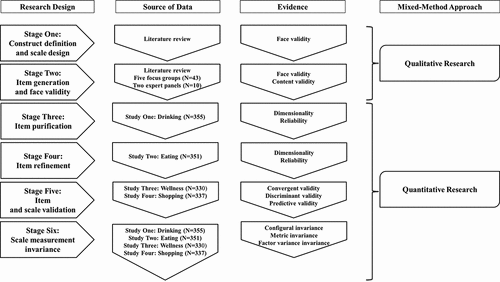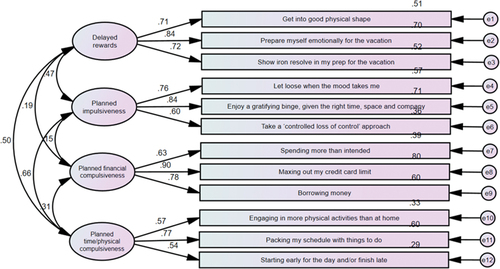Figures & data
Figure 1. Scale development for TCH.

Table 1. Demographic profiles (Studies 1 to 4).
Table 2. Exploratory factor analysis for the TCH factors (Study 1).
Table 3. Goodness-of-fit indices for the TCH factors (Study 2).
Figure 2. Measurement model for TCH (Study 2).

Table 4. Composite reliabilities, average variance extracted scores and correlations of the TCH factors (Study 3).
Table 5. Correlations between the developed TCH scale and existing scales (Study 3).
Table 6. Predictive validity of the TCH scale factors on intention (Study 4).
Table 7. Measurement invariance of the TCH scale (Studies 1 to 4).
